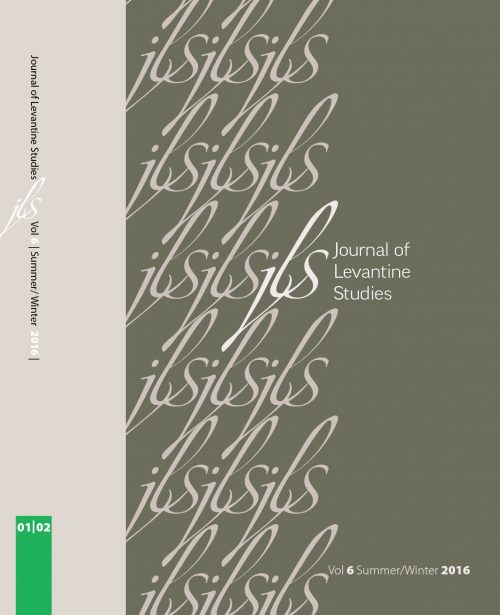-
Add to cartQuick view
Creating Sepharad: Expulsion, Migration, and the Limits of Diaspora
Free!The expulsion of the Jews from Spain in 1492 represents one of the most significant diasporic moments in Jewish history. However, a shared diasporic consciousness among the exiles, what we might call the diasporic “stance” of the Sephardic world, was neither automatic nor universal. Rather, the interconnected challenges of migration, resettlement, and the re-formation of local and translocal communities was a process that endured for much of the sixteenth century, affecting the exiles and their descendants in different ways. This article traces the emergence of the Sephardic diaspora—both as a form of social organization and as a cultural concept—and explores the limits of Sephardic community and identity. My intention is to highlight the strengths and the limits of the diaspora model as a means of understanding the nature and development of Sephardic society in its formative phase.
Add to cartQuick view -
Add to cartQuick view
Deterritorialization of Belonging: Between Home and Unhomely in Miral al-Tahawy’s Brooklyn Heights and Salman Natur’s She, the Autumn, and Me
Free!In this article, I argue that Mīrāl al-Ṭaḥāwī’s Brooklyn Heights (Brūklīn Hāyts, 2010) and Salmān Nāṭūr’s She, the Autumn and Me (Hiya, Anā, wa-l-Kharīf, 2011) call into question the very fixedness of the concepts of “homeland” and “diaspora/abroad,” and obscure the distinction between the indigene and the relocated diasporic subject. She, the Autumn and Me (Hiya, Anā, wa-l-Kharīf, 2011) is the most recent novel by Palestinian Israeli writer Salmān Nāṭūr (b. 1949), a seasoned writer of short stories, novels and critical writings. Brooklyn Heights is the fourth and most recent novel of the Egyptian Bedouin Mīrāl al-Ṭaḥāwī (b. 1969), who stands out as the first Egyptian Bedouin woman to publish modern Arabic prose. Through their portrayal of characters who are outcasts or loners, these contemporary novels complicate and deconstruct axioms which imply a reciprocal association between homeland and belonging, on the one hand, and exile/diaspora and foreignness or estrangement, on the other. In this study, I interrogate portrayals of the homeland in both texts, as it is conceived through shades of belonging and foreignness; and how “abroad” is portrayed vis-à-vis an originary homeland, in layered diasporic terms, and yet also conflated with home and homeland.
Add to cartQuick view -
Add to cartQuick view
The Jewish Precedent in the Spanish Politics of Conversion of Muslims and Moriscos
Free!The figure and the problem of the converso are often addressed in Abravanel’s works, especially after the 1492 expulsion, as has already been noted and studied by earlier scholars. Yet the link between Abravanel’s theological-political conceptions and his disseminated remarks on converts has not been studied as such. In this article I will try to partially fill this lacuna by studying a few of Abravanel’s important texts on the converts and by highlighting their theological and political background and meaning. Modern historiography has attempted to separate the political dimension of the converso phenomenon apparent in Abravanel’s biblical and messianic commentaries from the theological hermeneutical framework in which it is expressed. The following study focuses on Abravanel’s apologetic use and explanation of the conversos’ fate as it comes to the fore in several passages of his messianic work Mashmia yeshua (Announcer of salvation) of 1498 and of his commentary on Ezekiel of 1504. Abravanel’s messianic apology of Judaism after 1492 developed a certain theological and political meaning of the conversos’s destiny, which pointed at the converso not as a political figure revealing the historicity of the religious community but as a necessary by-product of exile participating in the messianic history of Israel and even revealing the stage it had reached.
Add to cartQuick view
- Home
- About JLS
- Issues
- Vol. 9 No. 1 | Summer 2019
- Vol 8 No 2 Winter 2018
- Vol. 8, No. 1: Summer 2018
- Vol. 7, No. 2: Winter 2017
- Vol. 7, 1: Summer 2017
- Vol. 6, Summer/Winter 2016
- Vol. 5, No. 2 Winter 2015
- Vol. 5, No. 1 Summer 2015
- Vol. 4, No. 2 Winter 2014
- Vol. 4, No. 1 Summer 2014
- Vol. 3, No. 2 Winter 2013
- Vol. 3, No. 1 Summer 2013
- Vol. 2, No. 2 Winter 2012
- Vol. 2, No. 1 Summer 2012
- Vol. 1, No. 2 Winter 2011
- Vol. 1, No. 1 Summer 2011
- Blog
- dock-uments
- Subscribe
- Submit
- Contact


